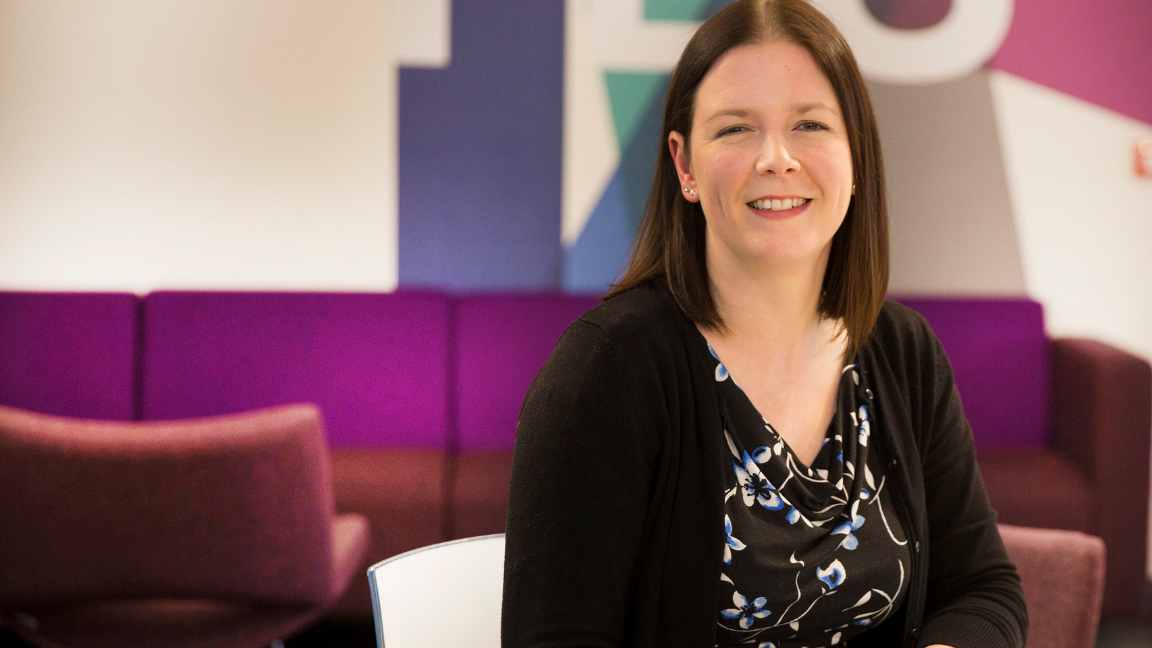
Case Study
Back to academic roots after industry success
Date: May 25, 2022
Dr Helen Berry’s career journey has come full circle, from academia to industry and now back again.
As a PhD student then postdoctoral researcher at the University of Leeds, Helen was instrumental in developing the science underpinning the regenerative medicine spin-out company Tissue Regenix. She joined the company as Chief Scientist when it was first established in 2007.
Tissue Regenix’s patented ‘decellularisation’ technologies remove cells and DNA from tissue and bone leaving scaffold implants to repair or replace damaged body parts. The company was based initially in the University of Leeds bioincubator and then moved to the BioCentre at the University of York.
The move to industry was a culture shock after university life. “There were only two employees at the start, myself and an engineer so we were really in at the deep end!” Helen says. “My role was to establish the R&D team and quality management system, which involved learning about the entire regulatory pathway for medical devices.
“Although I missed my own lab work, I’d always been focused on our ultimate goal of getting our products into patients, so it was a huge opportunity to help make this happen.”
Invaluable resource
The IKC had already played its part in bringing the spinout company to life, funding a number of co-development projects to progress the decellularisation technology towards the market, supporting product development and testing methods for quality control and validation. In addition, IKC events also ensured that the Tissue Regenix team were introduced to the right industry partners and collaborators along the way.
Says Helen: “The IKC hosted academic-industry events to bring the medtech community together and this helped to build networks and forge valuable connections both across the UK and internationally. Having IKC Technology Innovation Managers with expertise in different areas to call on for information and guidance about the licencing or commercialisation process whenever needed was such an invaluable resource.”
The company and product pipeline grew quickly and by 2010 the company had been floated on the AIM (Alternative Investment Market) of the London Stock Exchange, had its first CE marked product and a regulatory application to the USA’s Food and Drug Administration (FDA) for a decellularized skin product.
Helen’s role had changed to R&D Manager and the company’s growing success in the US led to an increased focus on the later stages of product development, which prompted her to start thinking about her next career move. “The US market operates so differently from Europe in its rules around selling human-derived materials and it was mainly the US team driving the discussions with distribution firms, while I was dealing more with marketing teams,” she says. “My role was much less about the science side, developing products and clinical interactions which is what I had loved most.”
Passing on knowledge
In 2015 Helen applied for, and was awarded, an Academic Fellowship in Cardiovascular Regenerative Therapies & Devices at the University of Leeds, bringing her back on the campus to lead her own research group – and coincidentally based in the very laboratory in the Institute of Medical and Biological Engineering (iMBE) where she started her career working on decellularising heart valves.
Now an independent Principal Investigator, Helen drives her own research agenda, securing grants and supervising PhD students. She also, importantly, teaches in the School of Biomedical Sciences, and she is proud to pass on her industry knowledge to students
“We’ve incorporated a medical device development element into the undergraduate and postgraduate teaching modules and I’m able to share both my research skills and the industrial and commercialisation experience I’ve gained over the past eight years with the next generation of medical engineering innovators, which is extremely rewarding,” she says.
Back to Case Studies
